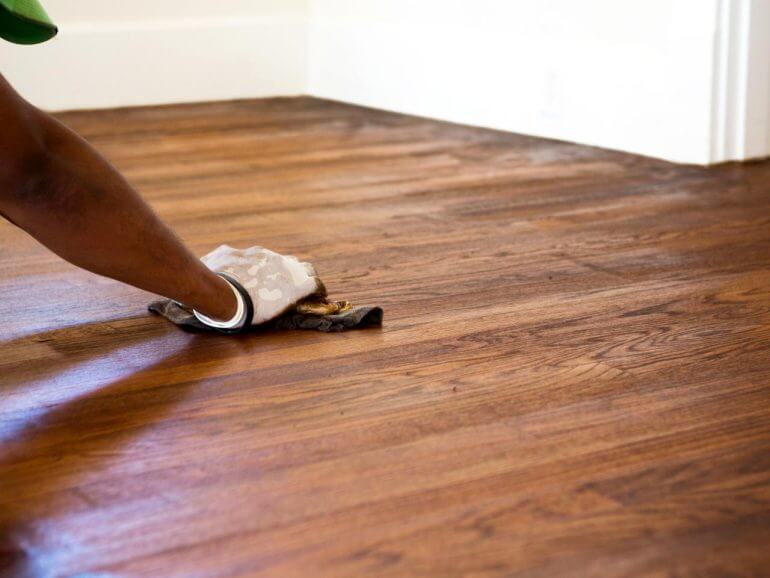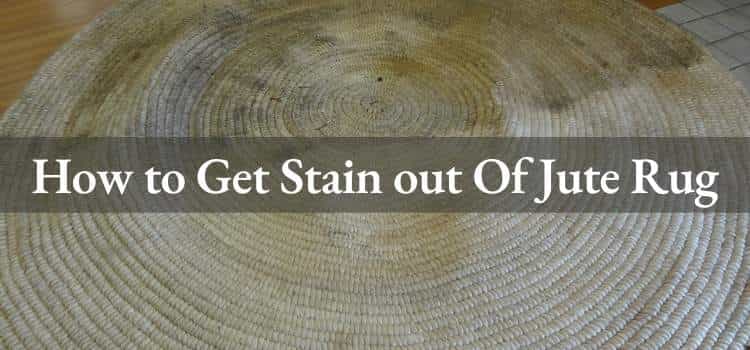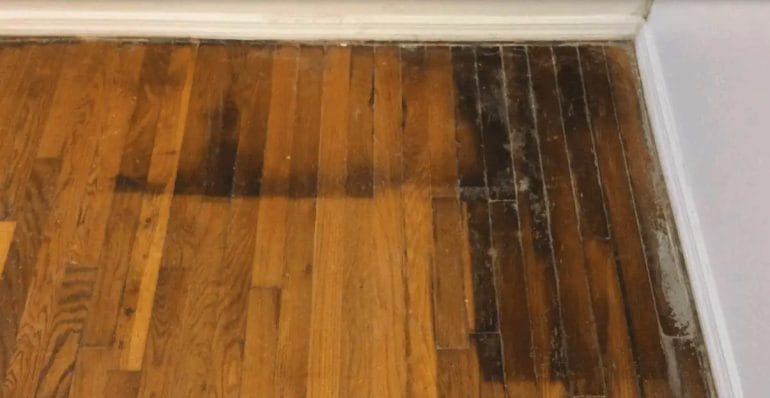Struggling to remove stubborn stains from your wood floor? Look no further! We have the solution you need to restore your floor’s beauty. Our tried and tested methods will help you effectively eliminate those unsightly marks without causing any damage to your precious wood. With our step-by-step guide and expert tips, you’ll be able to say goodbye to those stubborn stains and enjoy a flawless wood floor once again.

Best Practices for Preventing Stains on Wood Floors
Wood floors can add warmth and elegance to any home, but they require regular maintenance and care to keep them looking their best. One of the common challenges that wood floor owners face is preventing stains. Stains can detract from the beauty of your floors and may be difficult to remove. However, by following a few best practices, you can minimize the chances of stains and keep your wood floors looking pristine for years to come.

1. Clean Spills Immediately
When liquids are spilled on wood floors, it is important to clean them up promptly to prevent staining. Use a soft, absorbent cloth or paper towel to blot the area gently. Avoid rubbing the spilled liquid as it may push it further into the wood or cause damage to the finish. If needed, you can use a mild wood floor cleaner recommended by the manufacturer to remove any residue.
2. Use Protective Mats and Rugs
Place mats or rugs in high-traffic areas, such as entryways and hallways, to protect your wood floors from dirt, grit, and moisture. These mats will help trap dirt and prevent it from scratching or staining the wood. Make sure that the mats are made of a non-slip material to prevent accidents. Additionally, consider using mats or area rugs in areas where spills are more likely to occur, such as near sinks or dining areas.
3. Avoid Harsh Chemicals
When cleaning your wood floors, avoid using harsh chemicals or abrasive cleaners that can damage the finish or penetrate the wood. Opt for pH-neutral or specifically formulated wood floor cleaners that are gentle and won’t leave behind residue. Always follow the manufacturer’s instructions on the cleaning product to ensure you are using it correctly.
4. Trim Pet Nails
If you have pets in your home, keep their nails trimmed regularly. Long nails can cause scratches on the surface of the wood, making it more susceptible to stains. Additionally, make sure to clean up any pet accidents immediately to prevent staining and damage to the wood.
5. Protect Against Furniture Scratches
Place felt pads or furniture glides on the legs of your furniture to prevent scratches and scuffs on your wood floors. When moving furniture, lift it instead of dragging it across the floor to avoid causing damage. If you have heavy furniture pieces that are difficult to move, consider using furniture sliders to minimize the risk of scratches.
6. Control Humidity Levels
Wood floors are sensitive to changes in humidity levels, which can cause them to warp or stain. Maintain a stable humidity level in your home by using a humidifier during dry months and a dehumidifier during humid months. Aim for a relative humidity level of around 40-60%. Avoid excessive moisture on your wood floors, as it can lead to water damage and staining.
7. Regularly Maintain and Refinish
Regular maintenance and refinishing can help prolong the life of your wood floors and prevent stains. Follow the manufacturer’s guidelines for cleaning and maintenance, including proper vacuuming and mopping techniques. Depending on the wear and tear, you may need to refinish your wood floors every few years to restore their beauty and protect them from stains.
In summary, preventing stains on wood floors requires proactive care and maintenance. By promptly cleaning spills, using protective mats, avoiding harsh chemicals, trimming pet nails, protecting against furniture scratches, controlling humidity levels, and regularly maintaining and refinishing the floors, you can keep your wood floors looking beautiful and stain-free for years to come.

Professional Stain Removal Techniques for Wood Floors
Wood floors can add warmth and beauty to any home or office space. However, even with regular maintenance and care, stains can still occur. Whether it’s a spill, pet accident, or stubborn mark, getting rid of stains on wood floors can be a daunting task. In this section, we will explore some professional stain removal techniques that can help restore the natural beauty of your wood floors.
1. Identify the Type of Stain
Before attempting any stain removal technique, it’s important to identify the type of stain on your wood floor. Different stains require different treatments. Common types of stains include water stains, oil-based stains, ink stains, pet stains, and food stains.
2. Blot the Stain
Once you have identified the type of stain, the first step is to blot the affected area with a clean, dry cloth. This will help remove any excess liquid or residue from the surface of the wood.
3. Prepare a Stain Removal Solution
Next, prepare a stain removal solution based on the type of stain you’re dealing with. Here are some effective homemade solutions:
- For water stains: Mix equal parts white vinegar and water.
- For oil-based stains: Use a mixture of dish soap and warm water.
- For ink stains: Apply rubbing alcohol or nail polish remover to a clean cloth.
- For pet stains: Create a solution of hydrogen peroxide and water.
- For food stains: Make a paste using baking soda and water.
Ensure that the solution is well-mixed and ready for application.
4. Apply the Stain Removal Solution
Gently apply the prepared stain removal solution to the stained area using a clean cloth or sponge. Make sure to work in the direction of the wood grain.
5. Let it Sit
Allow the stain removal solution to sit on the stain for a few minutes. This will give it time to penetrate and break down the stain.
6. Scrub the Stain
Using a soft-bristled brush or a non-abrasive scrubbing pad, gently scrub the stained area. Be careful not to apply too much pressure, as this can damage the wood surface.
7. Rinse and Dry
Rinse the area with clean water to remove any residue from the stain removal solution. Then, thoroughly dry the floor using a clean, dry cloth.
8. Apply Wood Floor Finish
Once the stained area is completely dry, apply a wood floor finish or polish to restore the shine and protect the wood surface from future stains.
9. Prevention is Key
While knowing how to effectively remove stains from wood floors is essential, prevention is always the best approach. To prevent future stains, consider using rugs or mats in high-traffic areas, promptly cleaning up spills, and using protective pads on furniture legs.
Summary
Stains on wood floors can be unsightly and frustrating, but with the right techniques, they can be effectively removed. Remember to identify the type of stain before attempting any treatment, blot the stain, prepare a suitable stain removal solution, apply it gently, let it sit, scrub the stain, rinse, and dry the area, and finally, apply a wood floor finish for protection. By following these professional stain removal techniques, you can restore the natural beauty of your wood floors and keep them looking their best for years to come.

Natural Remedies for Removing Stubborn Stains from Wood Floors
Wood floors add warmth and elegance to any home, but they can be prone to getting stubborn stains over time. Whether it’s a spill or a scuff mark, removing stains from wood floors can be a challenge. While there are commercial cleaning products available, they often contain harsh chemicals that can damage the wood’s finish. Luckily, there are several natural remedies you can try that are not only effective but also safe for your wood floors. In this section, we will explore some of the best natural remedies for removing stubborn stains from wood floors.
1. Baking Soda and Water
Baking soda is a versatile cleaning agent that can work wonders on stubborn stains. To remove stains from your wood floor, create a paste by mixing baking soda with water. Apply the paste to the stain and let it sit for a few minutes. Then, gently scrub the area with a soft cloth or brush. Finally, wipe away the paste with a damp cloth and dry the floor thoroughly. This method is particularly effective for removing tough stains like wine or pet urine.
2. Vinegar and Olive Oil
Vinegar is another natural cleaning agent that can be used to remove stains from wood floors. Mix equal parts of vinegar and olive oil in a spray bottle and spray it directly onto the stain. Let it sit for a few minutes, then wipe it away with a clean cloth. The vinegar will help to lift the stain, while the olive oil will restore the shine of the wood. This method is especially effective for removing water stains.
3. Hydrogen Peroxide
Hydrogen peroxide is a mild bleaching agent that can be used to remove stubborn stains from wood floors. Before using hydrogen peroxide, test it on a small, inconspicuous area of your floor to ensure that it doesn’t cause any discoloration. If it’s safe to use, apply a small amount of hydrogen peroxide to the stain and let it sit for a few minutes. Then, wipe it away with a clean cloth. Repeat the process if necessary until the stain is gone.
4. Lemon Juice
Lemon juice is a natural acid that can be used to remove stains from wood floors. Squeeze fresh lemon juice onto the stain and let it sit for a few minutes. Then, wipe it away with a damp cloth. Lemon juice works particularly well on food and drink stains, as well as ink stains. However, be cautious when using lemon juice on light-colored wood floors, as it can cause slight bleaching.
5. Tea Bags
Tea bags can be used to remove dark stains from wood floors. Steep a tea bag in boiling water for a few minutes, then remove it and let it cool down. Once the tea bag is cool, rub it over the stain in a circular motion. The tannins in the tea will help to lift the stain from the wood. Afterward, wipe away any residue with a damp cloth and dry the floor thoroughly.
Using these natural remedies can help you effectively remove stubborn stains from your wood floors without causing any damage. Remember to always test any cleaning solution on a small, inconspicuous area before applying it to the stain. With a little patience and the right approach, your wood floors will be stain-free and looking as good as new.
Quick and Easy DIY Solutions for Removing Stains from Wood Floors
Wood floors are a beautiful addition to any home, but they can be susceptible to stains. Whether it’s a spill or a pet accident, stains can leave unsightly marks on your wood floors. The good news is that there are several quick and easy DIY solutions that can help you remove stains and restore the natural beauty of your wood floors. In this section, we will explore some of these effective methods.
1. Vinegar and Water Solution
Vinegar is a versatile household ingredient that can be used for various cleaning purposes, including removing stains from wood floors. To create a vinegar and water solution, mix equal parts of water and white vinegar in a spray bottle. Spray the solution onto the stained area and let it sit for a few minutes. Then, wipe the area with a soft cloth or mop. The acidic properties of vinegar can help break down tough stains and restore the wood’s shine.
2. Baking Soda and Hydrogen Peroxide Paste
If you’re dealing with a stubborn stain on your wood floors, a paste made of baking soda and hydrogen peroxide can work wonders. Mix a small amount of baking soda with hydrogen peroxide to create a thick paste. Apply the paste to the stained area and gently scrub it using a soft brush or cloth. Let the paste sit for a few minutes, then rinse it off with water and wipe the area dry. The combination of baking soda’s abrasive properties and hydrogen peroxide’s stain-lifting abilities can effectively remove tough stains.
3. Lemon Juice and Olive Oil Mixture
Lemon juice and olive oil can be combined to create a natural wood floor cleaner that is not only effective in removing stains but also leaves a pleasant scent. Mix equal parts of lemon juice and olive oil in a spray bottle. Shake the bottle to thoroughly mix the ingredients. Spray the mixture onto the stained area and let it sit for a few minutes. Then, wipe the area with a soft cloth or mop. Lemon juice acts as a natural bleaching agent, while olive oil helps nourish and restore the wood’s natural shine.
4. Toothpaste
You might be surprised to learn that toothpaste can be used to remove stains from wood floors. The gentle abrasives in toothpaste can help lift and remove stains without damaging the wood’s surface. Apply a small amount of non-gel toothpaste to the stained area and gently rub it in using a soft cloth or brush. Let the toothpaste sit for a few minutes, then wipe it off with a damp cloth. Finally, dry the area with a clean towel. This method is particularly effective for light stains.
5. Tea Bags
If you have dark stains on your wood floors, tea bags can come to the rescue. Steep a couple of tea bags in boiling water for a few minutes. Remove the tea bags and allow them to cool slightly. Place the damp tea bags directly onto the stains and let them sit for a few minutes. The tannins in the tea can help darken the wood and reduce the appearance of dark stains. Afterward, gently wipe the area with a damp cloth to remove any residue.
6. Prevention Tips
While it’s essential to know how to remove stains from wood floors, prevention is always better than cure. Here are a few tips to help you prevent stains in the first place:
- Place doormats at entryways to trap dirt and prevent it from being tracked onto the wood floors.
- Use protective pads or furniture coasters under heavy furniture to prevent scratches and stains.
- Wipe up spills and accidents immediately to prevent the liquid from seeping into the wood and causing stains.
- Regularly sweep or vacuum your wood floors to remove dirt and debris that can lead to stains.
Summary
Wood floors can be prone to staining, but with the right DIY solutions, you can easily remove stains and restore the natural beauty of your floors. Vinegar and water, baking soda and hydrogen peroxide, lemon juice and olive oil, toothpaste, and tea bags are all effective remedies for various types of stains. Remember to take preventive measures to maintain the pristine condition of your wood floors. By following these quick and easy tips, you can keep your wood floors looking their best for years to come.
FAQs
How can I remove stains from my wood floor?
To remove stains from a wood floor, start by gently scrubbing the affected area with a mixture of warm water and dish soap. If the stain persists, try using a wood floor cleaner specifically designed for your floor’s finish. For stubborn stains, sanding and refinishing may be necessary.
What should I avoid when trying to remove stains from a wood floor?
Avoid using harsh chemicals or abrasive cleaners, as these can damage the wood. Additionally, do not use excessive amounts of water, as this can cause the wood to warp or swell. Always test any cleaner or method in an inconspicuous area before applying it to the stained area.
Can I prevent future stains on my wood floor?
Yes, you can take steps to prevent future stains on your wood floor. Place doormats at entrances to trap dirt and moisture, use furniture pads to protect against scratches, and clean up spills promptly. Avoid dragging heavy furniture across the floor, as this can cause scratches and dents.
Conclusion
In conclusion, removing stains from wood floors can be a challenging task, but with the right techniques and products, it is possible to restore the natural beauty of your flooring. Whether it’s a wine spill, pet urine, or oil stains, prompt action is key. Remember to always test any cleaning solution on a small, inconspicuous area before applying it to the stain. Different stains may require different methods, such as sanding, bleaching, or using specialized stains removers. Additionally, regular maintenance and preventative measures like using mats and rugs can help prevent future stains. By following these tips, you can keep your wood floors looking pristine and stain-free for years to come.